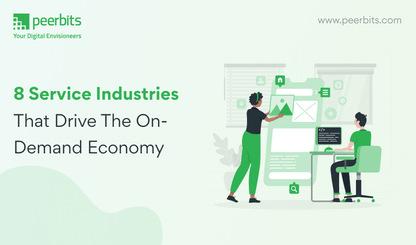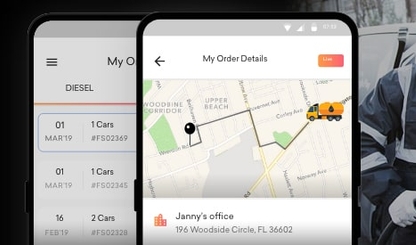When Uber came, taxi businesses were left with two options: adapt or perish. It felt like an outsider disrupted the decades-old industry in a matter of few years. With no idea what to do, taxi business did the most logical thing they could come up with--asking mobile app development companies for help. Help arrived but it was only the beginning of the so-called phenomenon coined from Uber itself—Uberisation. More industries underwent Uberization in the following years.
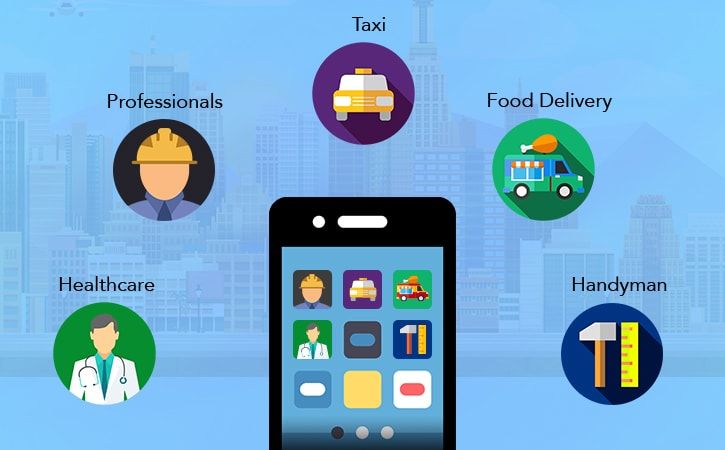
Soon a player, mostly an industry outsider, would appear out of nowhere with no business whatsoever in the industry, build the necessary IT infrastructure, collaborate with a few local players belonging to the industry and soon disrupt the entire industry.
The disruption was led by a bunch of startups at the forefront of Uberizing their respective industry. Many leading new portals and online journals around the world called them Uber for X startups while X stands for the service industry they disrupted.
It was what we call the beginning the on-demand revolution. The economy of demand and supply moved to on-demand and instant provisioning of services.

Meanwhile, hotel associations around the world were already growing apprehensive with sudden onslaught of Airbnb taking over a substantial part of their businesses. Something had to be done. If you can’t fight the menace, better be a part of it.
After all, no Uber for X startup can move without the support of local suppliers and service providers. The first thing the customers expect from an on-demand service is the speed of delivery, how swift the services are, which local suppliers and professionals are capable of.
Year 2022 marks eleven years of Uber, an app-based ride hailing service launched in San Francisco in 2011, that changed the way we receive services and request them.
Seven years may have past but there are many industries that are still left to be disrupted. There many Uber for X startups today fighting to uberize a new industry or finding way to uberize a traditional service.
The pizza boy effect: on-demand delivery before apps came
Pablo Picasso once said, “good artists copy, great artists steal”. The idea of on-demand delivery wasn’t something Uber invented. In fact, it stole the popular idea of food delivery that was in widespread since the world war II. I am talking about your everyday, approachable pizza boy.
Uber just perfected the idea of on-demand taxi delivery services devised by radio cab operators in New York and London. Uber leveraged on existing infrastructure and technology, particularly mobility and cloud.
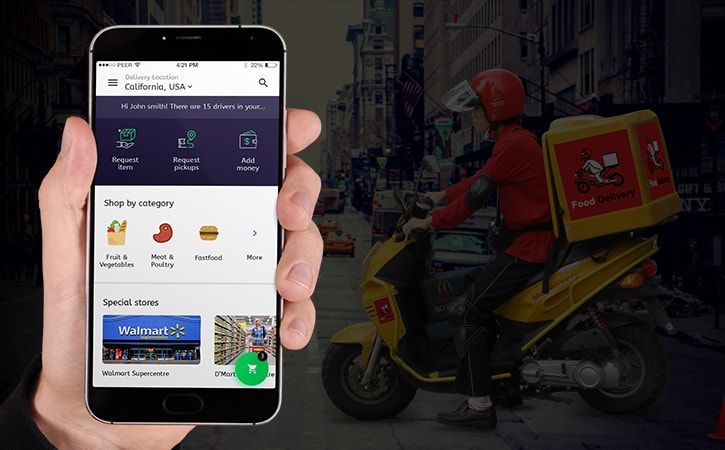
What I am trying to imply here is this that Uber did not come up with a revolutionary new idea, it just perfected an existing one. If you look on the surface, it replaced the origin of customer’s demand from annoying two-way radio of radio cabs to robust mobile apps on Android and iOS. It merged the concept with that of marketplace (read Amazon) and Build the perfect mobile app.
A revolution like Uberisation was inevitable. It’s that most industry pundits rejected it as an immediate threat until Uber for X startups started to emerge. However, the real problem started to surface when Uber for X startups started taking over b2b industries too. It was too late to push the panic button with the damage already being done.
Read more: How to Build hyperlocal on-demand delivery model?
Uber for X startups in 2022: what is lost and what is still on the table
To most industry experts, year 2014-2016 was the golden period to enter the market and seek funding as an Uber for X startup. Thousands of would-be entrepreneurs used the phrase to describe their companies in their pitch decks.
On one site alone—AngelList, where startups can court angel investors and employees—526 companies included “Uber for” in their listings. The space isn’t that exciting anymore. But if you look closely that was also the period of failure.
While the era would be noted for successful startups, it wasn’t without its share of failures. In fact, many Uber for X startups that were thriving in those years failed during the years following 2022.
For many, 2022 is considered as a year when the concept around Uber will actually start to benefit customers and make their life better. It’ll move from a punchline for upcoming startups to woo investors interests to actually something worth considering and investing in. The ecosystem has also matured a lot since 2011 when Uber was launched.

Year 2022 will be the year when on-demand services will be based upon skills required in a professional delivering the services and when the customers expects the service to be delivered to him and, also, conversion and retention rate of customers.
Skill vs availability of the professional
There are three types of service professionals in on-demand economy: specialists, generalists, and inexperts. Almost everybody can drive a car but not everybody can fix your bathroom faucet. You need a specialist. Plumber in that case. While a baby sitter doesn’t need any special skill whatsoever.

For a startup hiring these professionals to deliver the services to their customers, they don’t have to care about the skillsets of its professionals as long as their services are available and customers pay for them.
A few years back availability was not an issue. But with the sheer number of Uber for X startups today all offering the best incentives to lure the best local professionals to their side, plumber or doctor, finding available professionals is quite a task for startups, particularly new entrants.
The rarer the skill. The harder it is to find professionals for it. With the growing competition, the new battle is for availability of these professionals that is going to be battle much of 2021-22 for Uber for everything startups.
Healthcare providers are already hard to find and they are unavailable most of time. So if a startup could make them available to its customers 24x7, investors will walk to its doors.
Read more: On Demand Food Delivery App Food Ordering Platform
Scheduled vs immediate provisioning
When it comes to person wanting to go home after a long day of work, he wants a taxi right now. That’s why, the button on Uber app says ‘Ride Now’ because nobody wants their transport to arrive 3 hours later. They want it when they want it.
On demand apps don’t mean ‘now’. They mean ‘when I want to’. Uber for Transport is an exception. There are many ‘X’ services that customer wants at a particular time in a day. I probably want a hair stylist to arrive early in the morning on a Sunday morning. But I want the baby sitter before leave for my home. So no every service we want instantly.
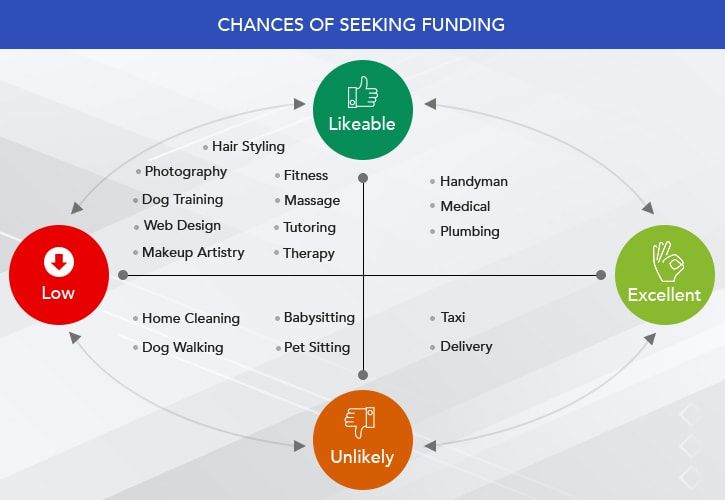
2022 would be the year when startups in this sector would have to schedule a lot many professional services at their customers’ place than ever as more and more people would become part of the on-demand economy.
The professional in ‘specialist’ categories would have busier weekends than ever.
Converting app downloaders to customers
With so many marketing tools available in 2022 to market an app, making people download the app won’t be an issue. The issue would be to make them use them once they have downloaded.
As per a Localytics report, 24% of users abandoned an app after using it just one time The figure is slightly up from a 23% abandonment rate recorded during the same time in 2016. App user abandonment rate is the second highest since 2012.
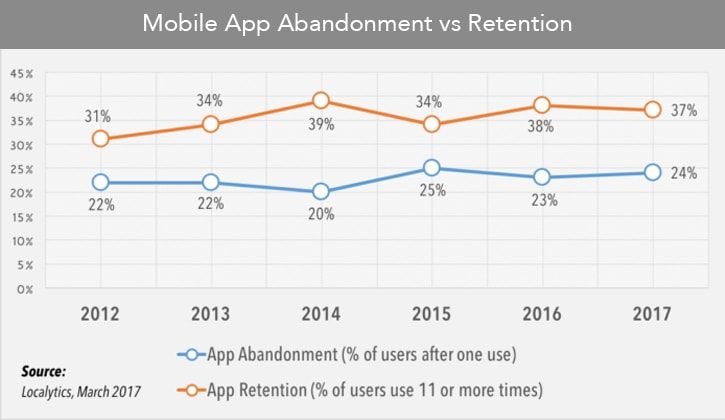
With so many players in a single ‘X’ industry, converting app customers would be the biggest challenge for startups in the year 2022.
Uber for X startups should insist on providing offers to new signees they cannot refuse, something nobody in the competition is offering them.
Not losing customers to competitors
Let me give you a worst-case scenario. In a city like New York, there would be at least 50 startups fighting for the food delivery space. All desperate to gain new customers and the attention of potential investors. They will go to any lengths to make more customers to sign up for the food delivery app. They will give unrealistic offers like 100% cashback, provide free delivery and what not.
This will make your customers leave the app in favor of the new player. Now suppose a customer orders food every weekend and uses a different app every time. He would not return to his favorite food delivery provider for next 50 weekends or almost a year.
That’s a long time to wait. In the year 2022, Uber for X startups should concentrate not only on gaining new customers but also keep them on the app with lucrative offers not just for new customer but also the existing ones.
Final thoughts
You can cannot keep a customer long on your platform by bribing them. Over-zealous offers for me are not very different from bribes. If there is one reason customers are going to stay on your app and continue using it that’ll be quality. The quality of your services and support thereafter.
Quality is never an accident; it is always the result of high intention, sincere effort, intelligent direction and skillful execution; it represents the wise choice of many alternatives. : WILLIAM A. FOSTER


